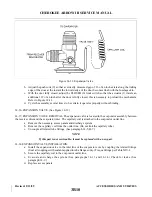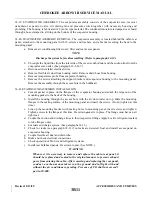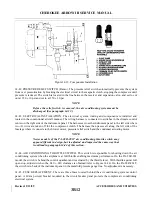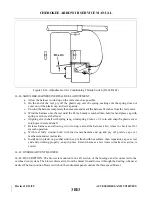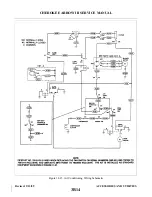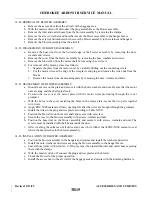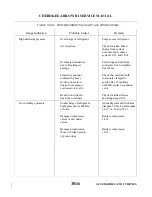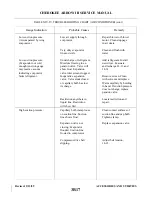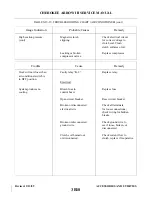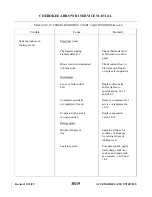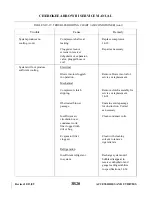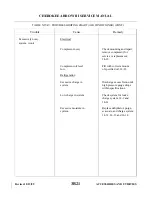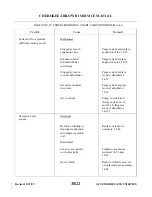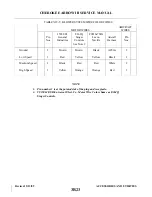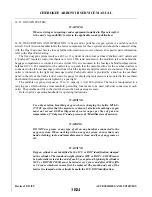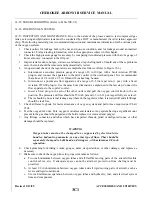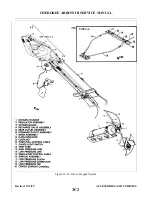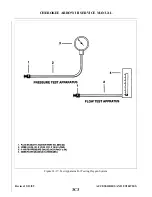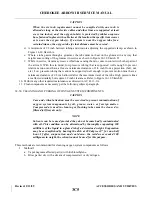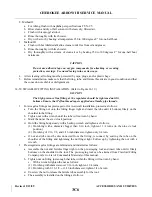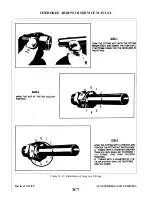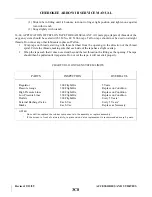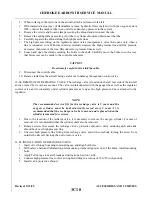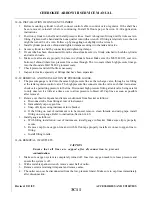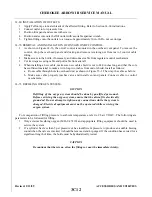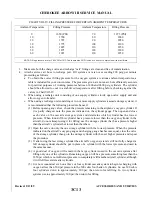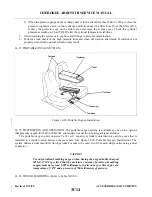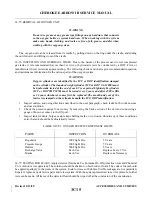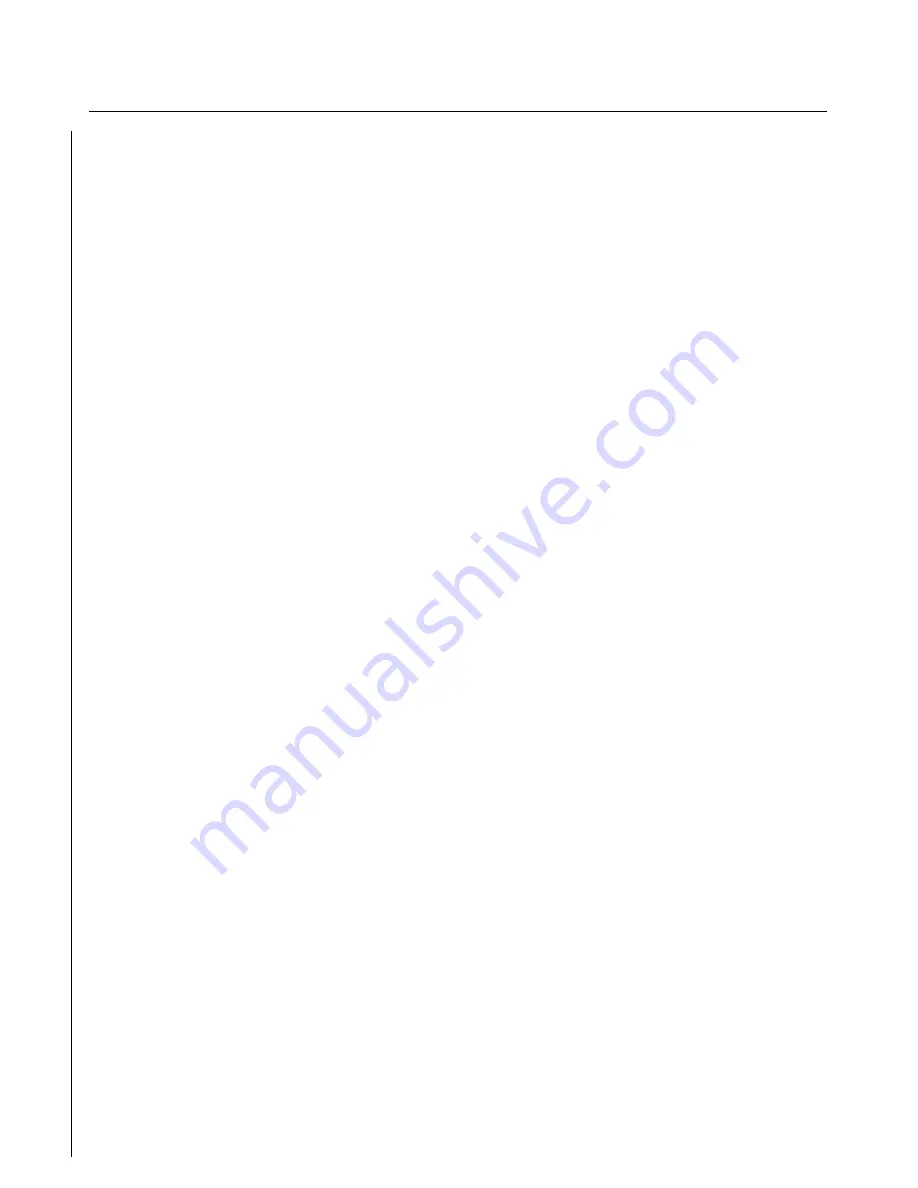
14-53. OXYGEN SYSTEM
WARNING
When servicing or inspecting vendor equipment installed in Piper aircraft, it
is the user’s responsibility to refer to the applicable vendor publication.
14-54. DESCRIPTION AND OPERATION. A fixed and/or portable oxygen system is available on this
aircraft. Scott Aviation manufacturers the major components for these systems and should be contacted along
with the Piper Customer Service for any further information not covered herein. For specific parts information
refer to the Piper Parts Catalog.
The fixed oxygen system involves a 48.3 cu. ft. cylinder tied into four overhead “shallow wall” outlets and
a “push-pull” regulator control mechanism. A 3AA 1800 tank, mounted in the modified tail cone behind the
baggage compartment, is connected to an external fill valve mounted to the fuselage behind fuselage station
bulkhead 191.0. The manifold for the outlets is set up such that the main feed line for the overhead outlets is
connected to the left rear passenger outlet from which the right rear and pilot outlets are connected. The copilot
outlet is connected to the right rear passenger outlet. Push-pull control is provided by a knob on the overhead
panel, to the left of the fresh air duct control A gauge for displaying tank pressure is mounted in the overhead
duct behind the passengers and is lighted by a post light.
The portable oxygen system uses a 22 cu. ft. capacity, 3AA 1800 cylinder. The tank is incorporated in a
carrying case which utilizes a dual manifold, permitting four masks to be used with dual connectors at each
outlet. The portable unit fits in the cradle between the back passengers seats.
Refer to pilot’s operating handbook for operating instructions.
WARNING
Use only aviation breathing oxygen when recharging the bottle. MIL-0-
27210C specifies that the moisture content of aviation breathing oxygen
must not exceed 0.005 milligrams of water vapor per liter of gas at a
temperature of 70 degrees F° and a pressure of 760 millimeters of mercury.
WARNING
DO NOT use grease or any type of oil on any hardware connected to the
oxygen system. When working with an oxygen system, ensure that your
hands, clothing, tools, and immediate area is clean and free of any grease or
oil.
WARNING
Oxygen cylinders are identified by the ICC or DOT identification stamped
on the cylinder. The standard weight cylinder (ICC or DOT 3AA 1800) must
be hydrostatic tested at the end of each 5 year period. Lightweight cylinders
(ICC or DOT 3HT 1850) must be tested every 3 years and after 4380 refills
or 24 years whichever comes first, be replaced. The month and year of the
last test is stamped on the cylinder beneath the ICC, DOT identification.
Revised: 2/13/89
3B24
CHEROKEE ARROW III SERVICE MANUAL
ACCESSORIES AND UTILITIES
Summary of Contents for ARROW III
Page 4: ...THIS PAGE INTENTIONALLY LEFT BLANK 1A4...
Page 12: ...THIS PAGE INTENTIONALLY LEFT BLANK 1A12...
Page 94: ...Figure 4 2 Wing Installation Revised 2 13 89 1D22 CHEROKEE ARROW III SERVICE MANUAL STRUCTURES...
Page 171: ...lH3 INTENTIONALLY LEFT BLANK...
Page 172: ...lH4 INTENTIONALLY LEFT BLANK...
Page 286: ...THIS PAGE INTENTIONALLY LEFT BLANK Revised 2 13 89 2A8...
Page 528: ...INTENTIONALLY LEFT BLANK 2K10 THRU 2L24 2K10...

